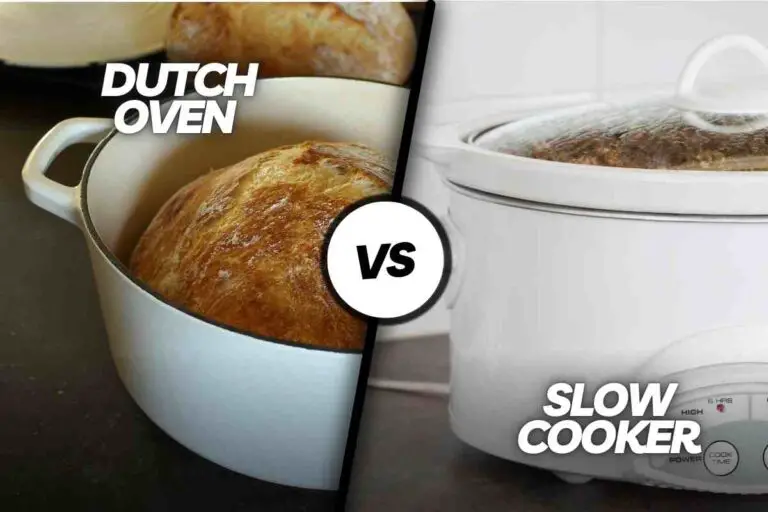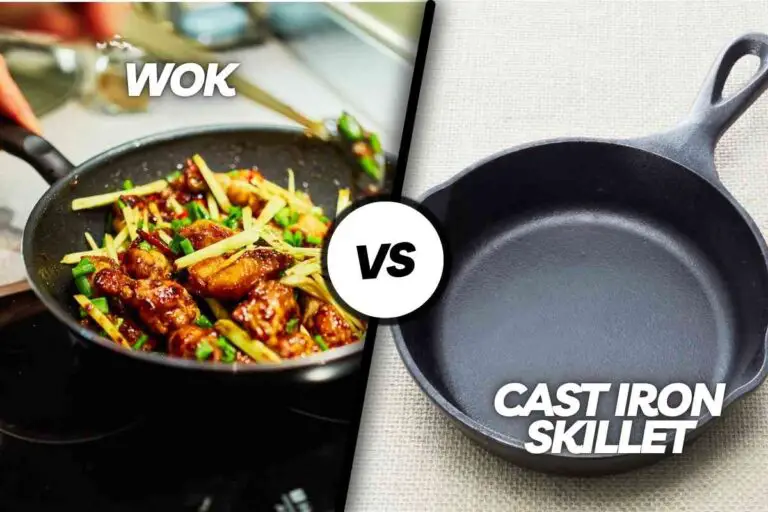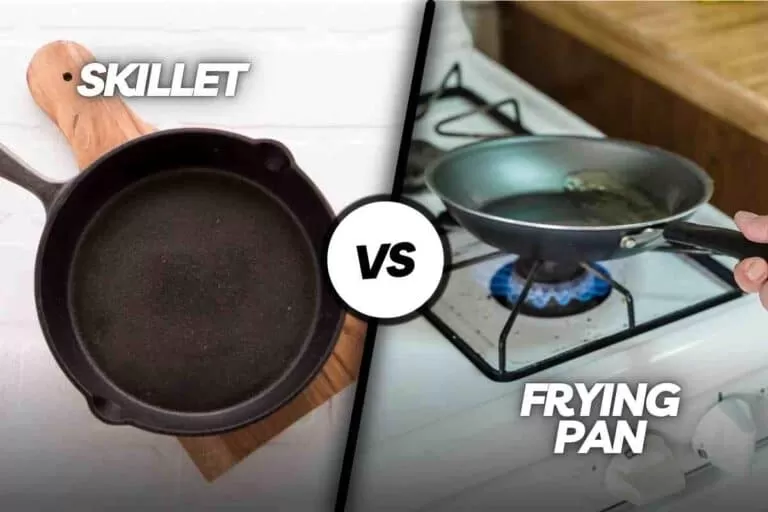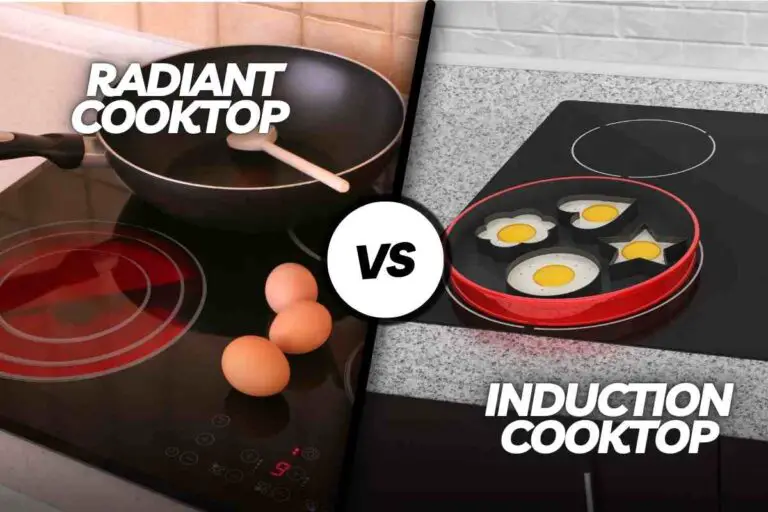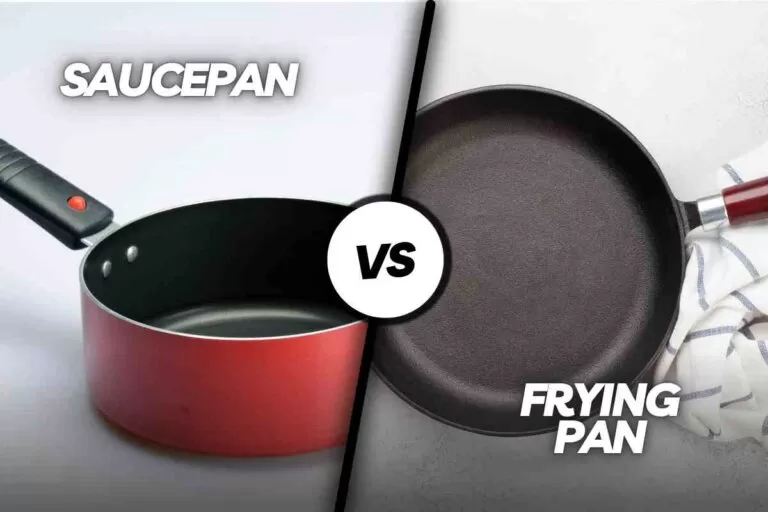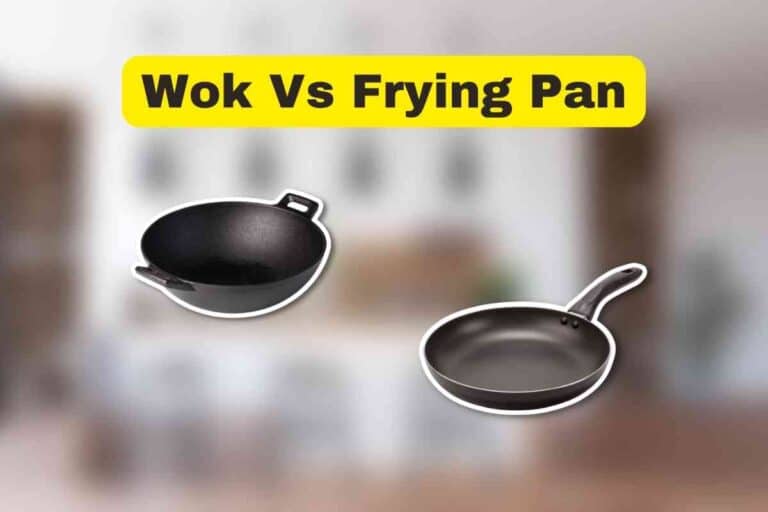9 Key Differences: Iron Vs Carbon Steel Wok
The main difference between an Iron Wok and a Carbon Steel Wok lies in their weight, heat retention, and versatility. A Carbon Steel Wok is lighter, more versatile, and generally more affordable. It’s easier to use and suits various cooking tasks. In contrast, a Cast Iron Wok holds heat better once it’s hot, which is crucial when cooking on a large burner.
While both can produce similar cooking results when used correctly, the choice often comes down to personal preference and how much weight one is willing to handle. Cast Iron Woks tend to be heavier and bulkier compared to their Carbon Steel counterparts.
Woks are incredibly versatile, allowing you to whip up a wide range of dishes, from stir-fries to deep-fried delights.
However, when it comes to choosing the right wok, you may find yourself torn between two popular options: iron and carbon steel.
9 Aspects: Cast Iron Vs Carbon Steel Wok
| Aspect | Carbon Steel Wok | Cast Iron Wok |
|---|---|---|
| Weight | Lightweight, easy to handle | Heavier, can be challenging to lift |
| Non-Stick Properties | Becomes non-stick when properly seasoned | Requires careful seasoning and care |
| Heat Retention | Excellent for quick and even cooking | Outstanding heat retention |
| Durability | Durable with proper maintenance | Highly durable with proper care |
| Cleaning | Requires regular cleaning and seasoning | Special cleaning requirements |
| Acidic Foods | Avoid cooking acidic foods | Vulnerable to acidic ingredients |
| Heat Distribution | Even heat distribution | Uneven heat distribution |
| Cooking Style | Versatile for most home cooks | Great for frying and slow-cooking |
| Affordability | Affordable option | Typically more expensive |
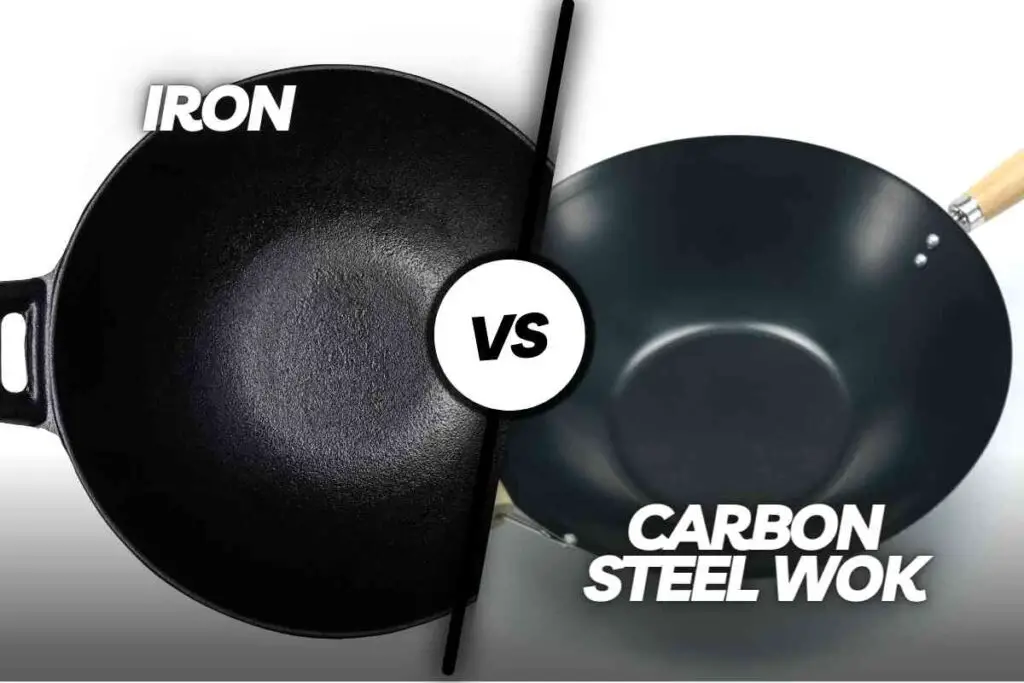
Advantages of Carbon Steel Woks
1. Lightweight and Ease of Handling
One of the standout features of carbon steel woks is their lightweight nature. This makes them a pleasure to handle, especially when you’re preparing dishes that require constant tossing and flipping.
Unlike their heavier cast iron counterparts, carbon steel woks won’t strain your wrists during extended cooking sessions.
2. Non-Stick Properties When Properly Seasoned
With proper seasoning carbon steel woks can become virtually non-stick. Seasoning involves applying a layer of oil and subjecting the wok to high heat, creating a natural non-stick surface. This means you can use less oil when cooking, making your dishes healthier without sacrificing flavor.
3. Excellent Heat Retention for Even Cooking
Carbon steel woks are renowned for their exceptional heat retention capabilities. They heat up quickly and distribute heat evenly across the cooking surface, ensuring that your ingredients cook uniformly. This even cooking is crucial for achieving the perfect stir-fry or sear.
Considerations for Carbon Steel Woks
1. The Need for Regular Cleaning and Maintenance to Prevent Rust
While carbon steel woks offer many advantages, they do require diligent care. To prevent rust, it’s essential to clean and dry your wok thoroughly after each use. Additionally, you should periodically re-season it to maintain its non-stick properties.
2. Avoiding Cooking Acidic Foods That May Strip the Seasoning
Carbon steel woks are susceptible to damage from acidic foods, which can strip away the seasoning. To preserve the seasoning and extend the wok’s lifespan, it’s advisable to avoid cooking highly acidic ingredients.
Advantages of Cast Iron Woks
1. Outstanding Heat Retention, Ideal for Frying and Keeping Food Hot
Cast iron woks excel in heat retention, making them perfect for frying and keeping food warm. Once heated, they maintain a consistent temperature, which is particularly advantageous for deep-frying and slow-cooking.
2. Durability and Longevity with Proper Care
Cast iron woks are built to last. With the right care, they can serve you for generations. They are incredibly durable and can withstand high temperatures, making them a valuable addition to your kitchen.
Considerations for Cast Iron Woks
1. Heavier Compared to Other Wok Materials
One of the main drawbacks of cast iron woks is their weight. They are substantially heavier than carbon steel woks, which can make handling and maneuvering them more challenging, especially for novice cooks.
2. Special Cleaning Requirements Using Hot Water and a Non-Metallic Brush
Cleaning cast iron woks requires extra attention. You should avoid using soap and abrasive materials. Instead, use hot water and a non-metallic brush to remove food residue and maintain the seasoning.
3. Uneven Heat Distribution, Necessitating Pre-Heating
Cast iron woks are known for uneven heat distribution, which means you need to pre-heat them thoroughly before cooking. Failure to do so can result in unevenly cooked dishes.
Recommendation
After weighing the advantages and considerations of both types of woks, the recommendation leans toward the Carbon Steel Wok. Here’s why:
Preference for Carbon Steel Wok Due to Its Lighter Weight, Versatility, and Affordability: Carbon steel woks strike a balance between being lightweight and durable. Their versatility in cooking styles, ease of use, and affordability make them an excellent choice for most home cooks.
Highlighting Superior Heat Distribution, Favored by Home Cooks: Carbon steel woks’ exceptional heat distribution capabilities make them a favorite among home cooks who seek consistent results in their stir-fries and sautés.
Considering Your Stove
When choosing between iron and carbon steel woks, you must consider your stove type. Different stoves have varying levels of heat output and compatibility with wok cooking.
Compatibility with Different Stove Types:
- Electric Glass Top Stoves: These stoves may not provide enough heat for proper wok cooking, as they are not designed for high-heat applications.
- Gas Stoves or Propane Burners: Gas stoves or outdoor propane burners are better suited for high-heat wok cooking. They deliver the intense heat needed to achieve the classic wok hei, the smoky and flavorful sear associated with wok dishes.
Wok Selection Tips
Here are some additional tips to help you choose the right wok based on your specific needs:
1. Designed for High-Heat Cooking on Open Flames
Woks are traditionally designed for high-heat cooking over open flames. If you have access to a gas stove or outdoor burner, you’re well-equipped for wok cooking.
2. Special Considerations for Cast Iron Woks
If you opt for a cast iron wok, keep in mind its weight and pre-heating requirements. It’s advisable to preheat cast iron woks in the oven to ensure even cooking.
3. Steel Woks as an Alternative for Electric Stoves
If you have an electric stove, a steel wok is a viable alternative to carbon steel. While not as lightweight as carbon steel, steel woks can still provide good heat distribution on electric stovetops.
Expert Opinions
Some Experts’ Perspective on Large Cast Iron Pans vs. Woks on Stovetops
Interestingly, some culinary experts suggest that a large cast iron pan can perform exceptionally well on stovetops, rivaling the performance of traditional woks.
This reinforces the idea that the suitability of a wok depends on your specific cooking style and needs.
Conclusion
In the debate of iron vs. carbon steel woks, there’s no definitive winner; it all comes down to your preferences and cooking requirements.
Consider your stove type, the style of dishes you love to prepare, and your comfort level with wok handling.
Whether you choose the lightweight and versatile carbon steel wok or the heavy-duty cast iron wok, the key is to select the right tool that enhances your culinary adventures.

